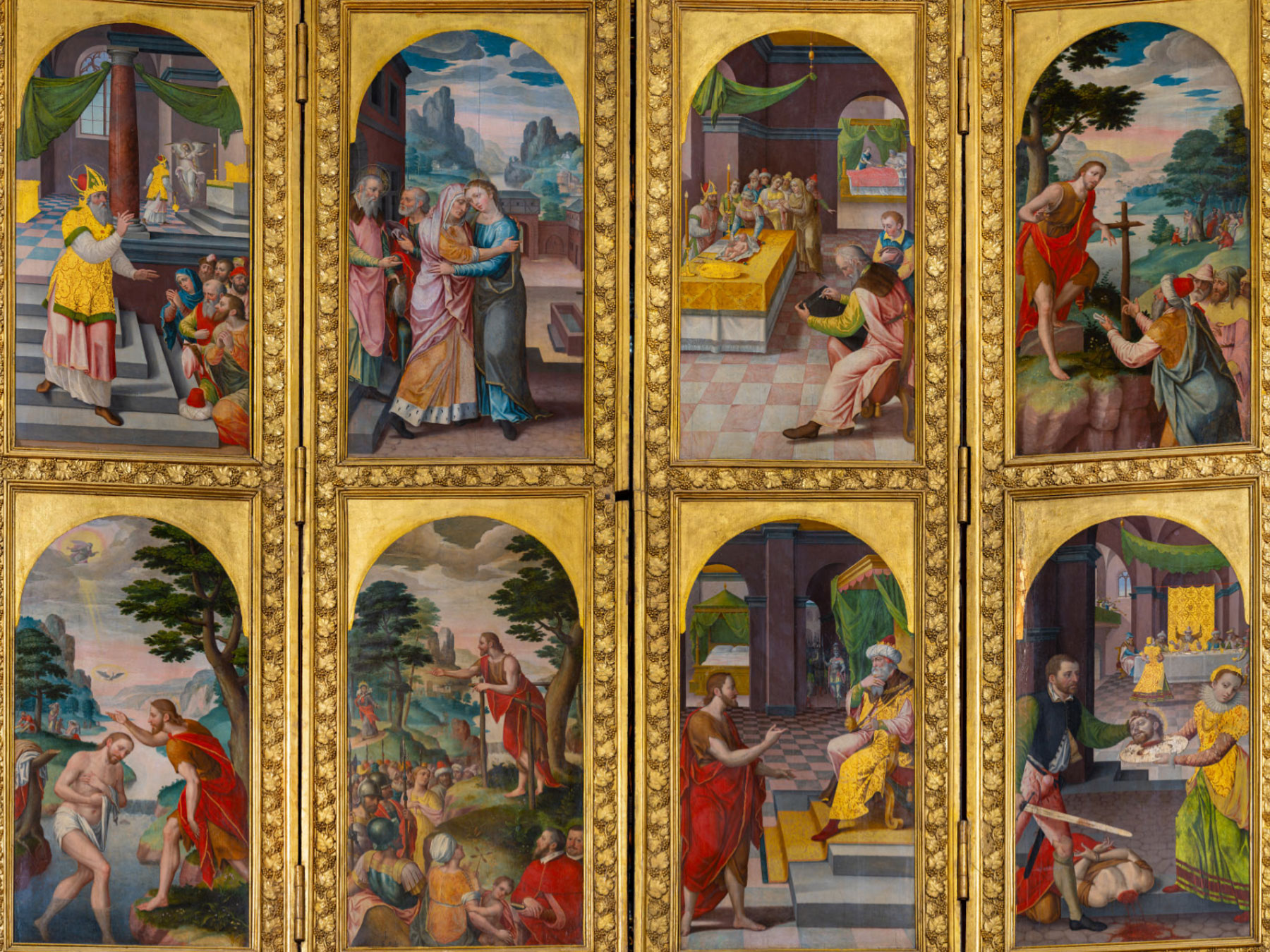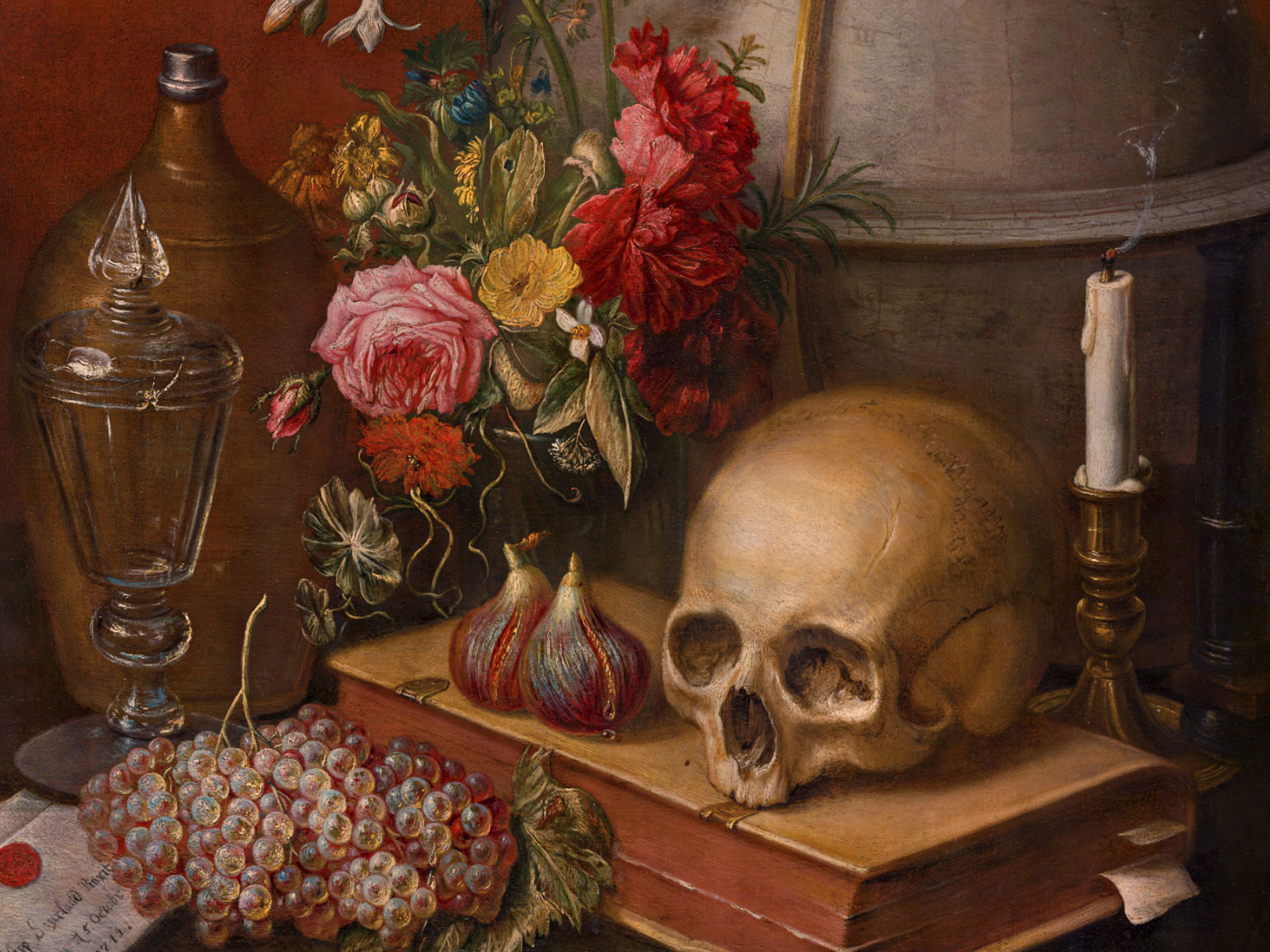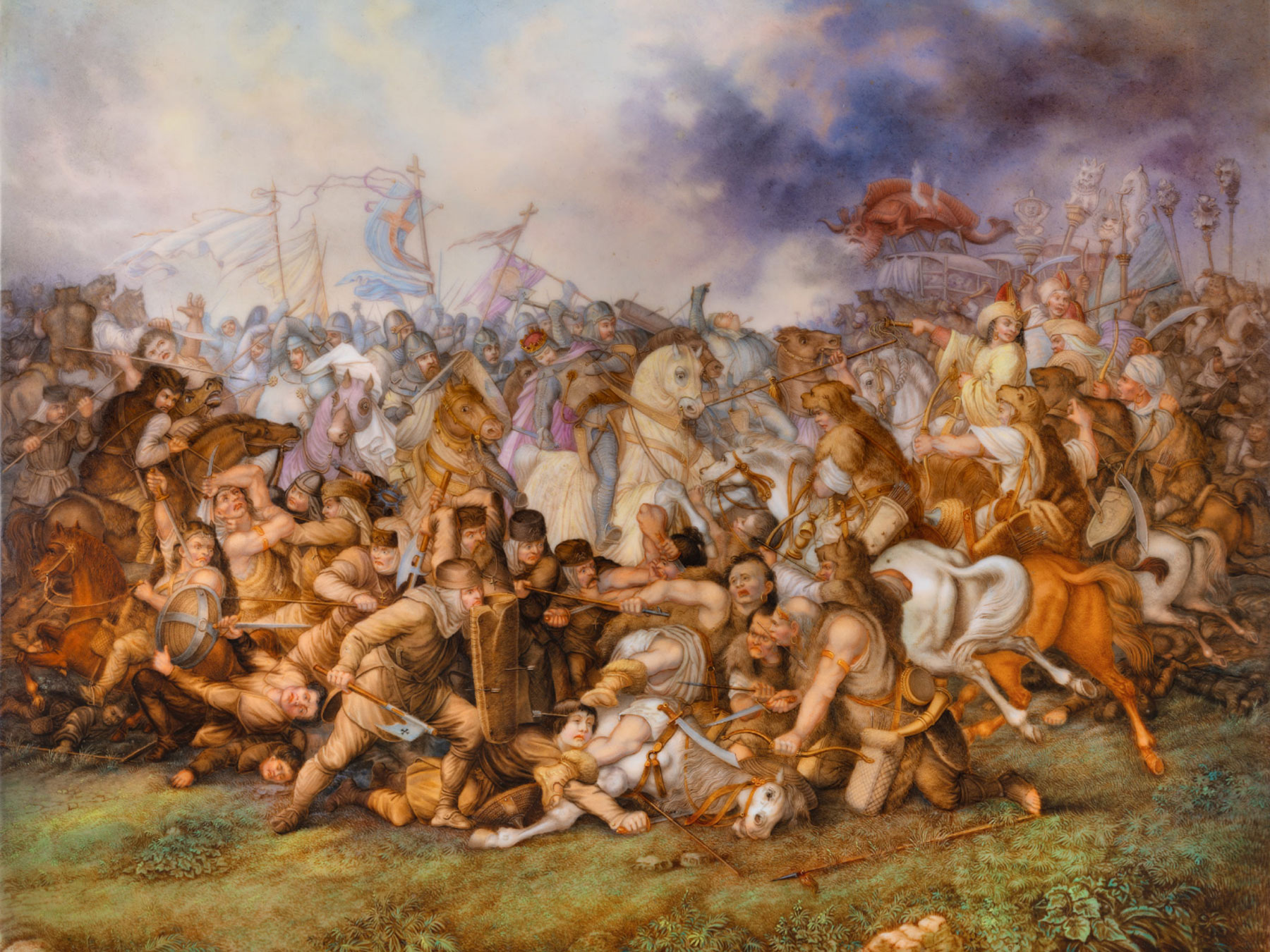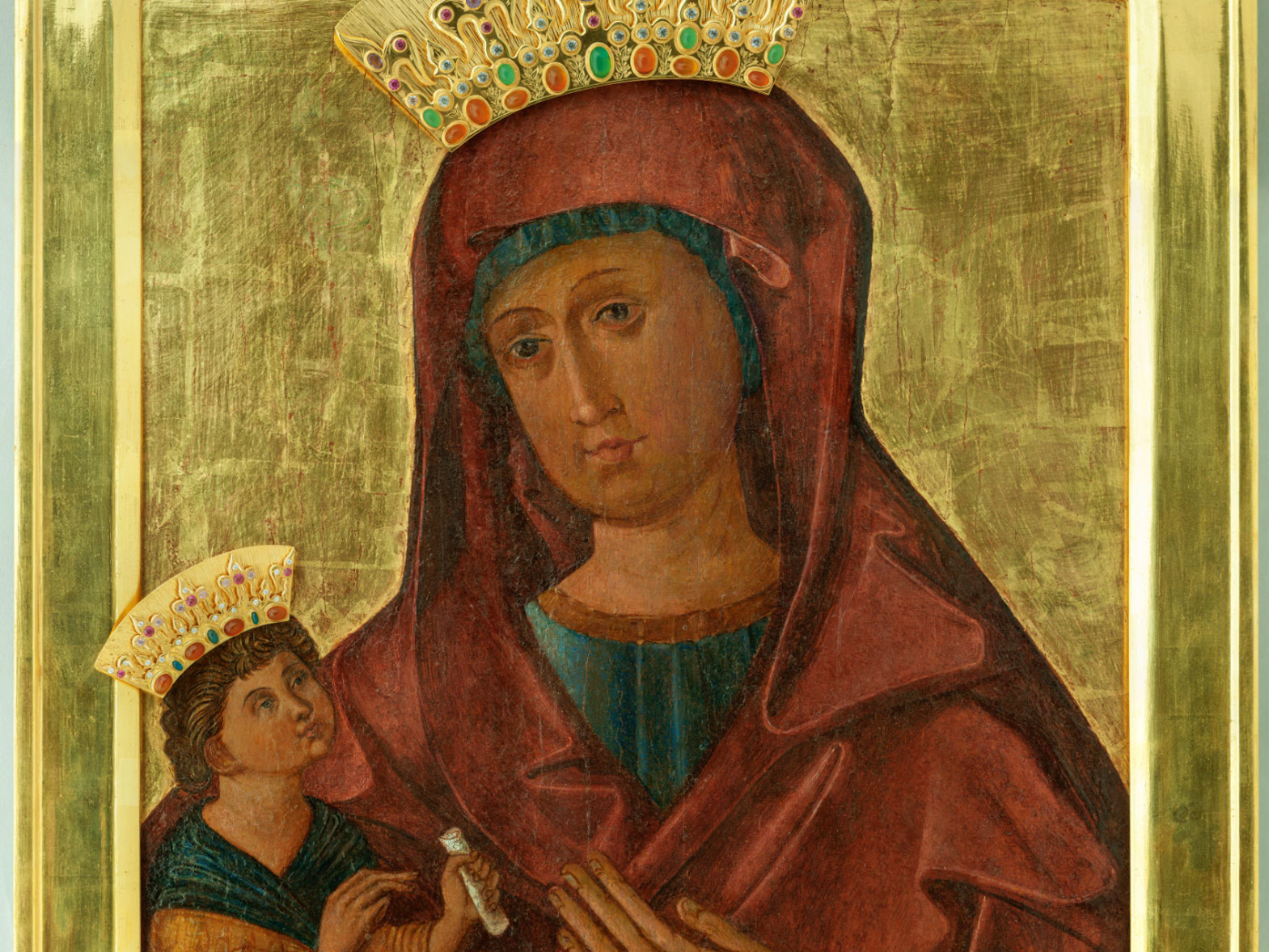Scenes from the life of Saint Elizabeth of Hungary
The Baroque chapel of St Elizabeth, adjacent to the south-east tower to the east, was built between 1682 and 1700 by the Italian architect Giacomo Scianzi, who also did the frescoes of the dome.
The wall painting depicts St Elizabeth’s works of mercy and the end of her short life, presented in the perspective of the open gates of the Kingdom of Heaven and its inhabitants coming out to welcome her.
The founder of the chapel was Duke Frederick of Hesse, who entered the Wroclaw cathedral chapter in 1666 and became its dean two years later. In 1671 he received the episcopal sacrament and was ordained a priest.
The chapel was built on an elongated rectangular plan with an altar annex and sacristy. The main part was covered with a cupola. The division of the walls, the introduction of columns, cornices and ornaments, and the combination of wall painting and stucco give a sense of fluidity and dynamism and the impression of more space. The play of light coming through the windows and the dome is important, directing the viewer’s gaze to the south wall and the niche framed by pairs of columns with the altar of St. Elisabeth, and then to the north wall, which is the backdrop for the founder’s stately tomb. The sculptures are the work of Domenico Guidi and Ercole Ferrata.
Gigapixels
)
)
)
)
)
)
)
)
)